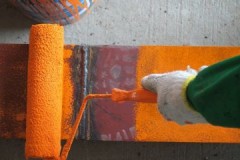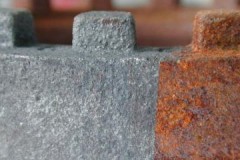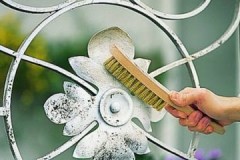Reliable methods and recipes on how to clean a bathtub from rust and plaque at home
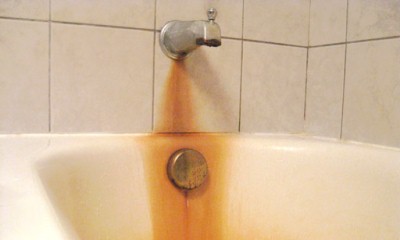 Every housewife dreams of a clean, snow-white bath.
Every housewife dreams of a clean, snow-white bath.
But, unfortunately, tap water, faulty taps and showers, irregular and sometimes improper maintenance of plumbing lead to unattractive yellow and red stains and a layer of limescale and soap deposits appearing on the walls of the bathtub.
How to clean a bathtub from rust and plaque at home? Folk remedies and household chemicals will help correct the situation and return the bathtub to its original whiteness.
Content
The best folk remedies for cleaning
Folk remedies will help remove rusty streaks and limescale from the surface of the bathtub. There are a sufficient number of recipes for cleaning compositions, the components of which can easily be found in any home.
How to clean with oxalic acid?
You can quickly remove traces of rust from the surface of the bathtub using oxalic acid.
Algorithm of actions:
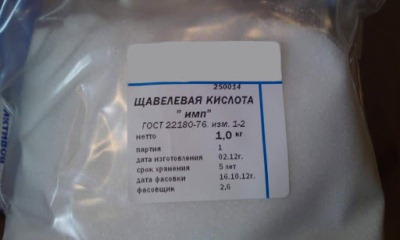 Dissolve 5 grams in 100 ml of warm water. dry oxalic acid powder.
Dissolve 5 grams in 100 ml of warm water. dry oxalic acid powder.- Using a spray bottle, moisten the stain generously with the prepared solution.
- After ten minutes, the traces of corrosion are thoroughly rubbed with laundry soap (such actions will help neutralize the acid reaction).
- The cleaned bath surface is washed off with warm water.
Oxalic acid is quite an aggressive agent. You can only work with it wearing protective gloves. Oxalic acid is used to clean enamel bathtubs. It is prohibited to use this product on acrylic surfaces.
Ammonia and hydrogen peroxide
An ideal solution for removing rust and limescale stains for any type of bathtub, preserving chrome and plastic fixtures - a mixture of ammonia and hydrogen peroxide.
Algorithm of actions:
- in a clean glass container, mix 50 ml of ammonia and 25 ml of hydrogen peroxide;
- The resulting product is used to treat rust stains and traces of limescale;
- After fifteen minutes, the plumbing is wiped with a damp sponge.
How to remove with salt and grape vinegar?
A mixture of table salt and grape vinegar will help quickly restore the original whiteness of the bath.
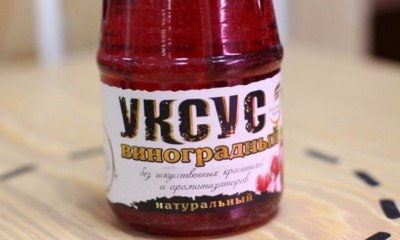 Algorithm of actions:
Algorithm of actions:
- In a clean glass container, mix 100 ml of grape vinegar and 50 g. salt.
- The resulting liquid is heated in a water bath and, without allowing it to cool, is applied to the rust spots.
- 25 minutes after treatment, the surface is washed under running water.
A mixture of vinegar and salt is most effective when it is hot, so it must be applied quickly, without waiting until it cools down.
How to remove with citric acid?
A solution of citric acid will help remove rust stains.
Algorithm of actions:
- dissolve a sachet of citric acid (20 g) in a glass of warm water (250 ml);
- The resulting product is generously moistened with rusty stains and left for half an hour;
- Afterwards the bath is wiped with a clean damp sponge.
Using a sponge, wipe the stains with the resulting product, after which the surface is washed off with water from the shower. It is worth remembering that a mixture of citric acid and soda is only suitable for enameled or cast iron bathtubs. Read more about the method of cleaning surfaces from rust using citric acid. this article.
How to remove with lemon juice and boric acid?
A mild, gentle product made from lemon juice and boric acid is ideal for cleaning bathtubs of any type (enamel, cast iron, acrylic and even plastic).
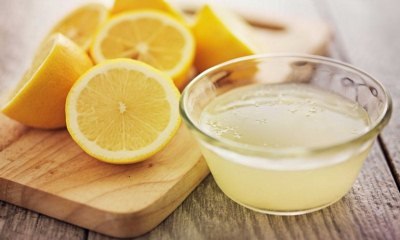 Algorithm of actions:
Algorithm of actions:
- Dissolve 5 grams in 100 ml of freshly squeezed lemon juice. boric acid.
- The resulting product is applied to the rust spots and left for at least five to ten minutes alone.
- Afterwards, rusty stains can be easily removed with a soft brush under running water.
Using this product you can not only quickly clean your plumbing fixtures, but also fill your bathroom with pleasant aromas.
The most effective household chemicals for removing yellowness and reviews about it
Household chemicals greatly facilitate the process of removing rust stains and limescale from the walls of the bathtub.
When going shopping, it’s a good idea to remember a few rules:
- the description must necessarily indicate information for which surfaces this composition is intended;
- You should not buy an unknown product whose packaging does not indicate the composition, date of manufacture and method of use;
- when choosing between dry cleaning powders and liquid compositions, it is better to give preference to the latter - liquid products are no less effective than dry powders, and they help preserve the surface of the bathtub from scratches and abrasions.
In specialized departments of supermarkets there is a wide selection of special products, among which we can highlight the TOP 5 most popular and effective:
Akrilan
Acrylan for bathrooms is a cleaning foam, the unique composition of which helps remove stubborn rust, mold, limescale and soap stains.
Suitable for all surfaces:
- acrylic,
- enameled,
- ceramic,
- chrome plated
Before use, shake the bottle well, apply the product evenly to the contaminated surface (you can use a sponge), and rinse with water after two minutes.
The average cost is 380 rubles. (400 ml bottle).
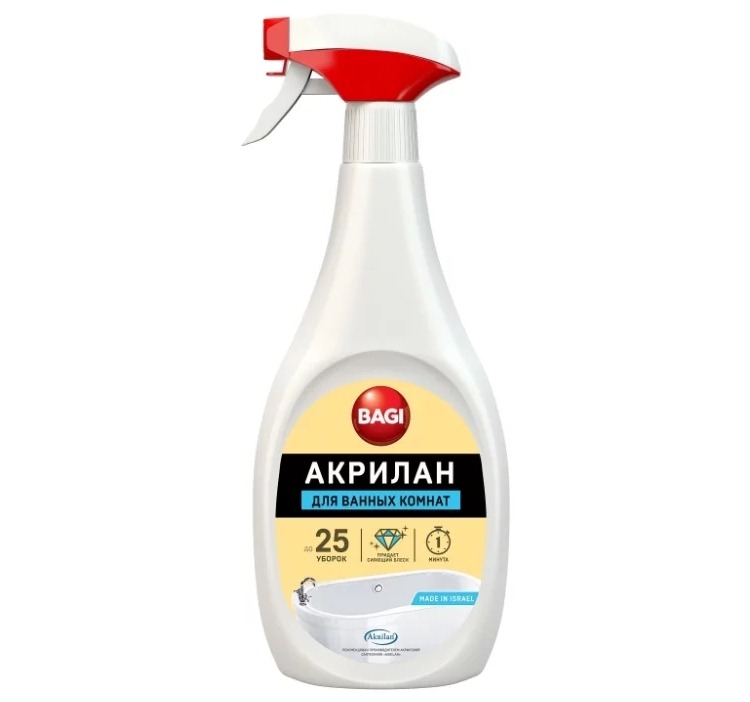
Comet spray
Comet spray - quickly removes 100% of rust and limescale deposits, kills up to 99% of bacteria. The special formula of the cleaning product helps not only to quickly clean the bathtub, but to protect it from the rapid settling of dirt (covers the walls of the plumbing fixtures with a protective layer).
The average cost is 360 rubles. (560 ml bottle).
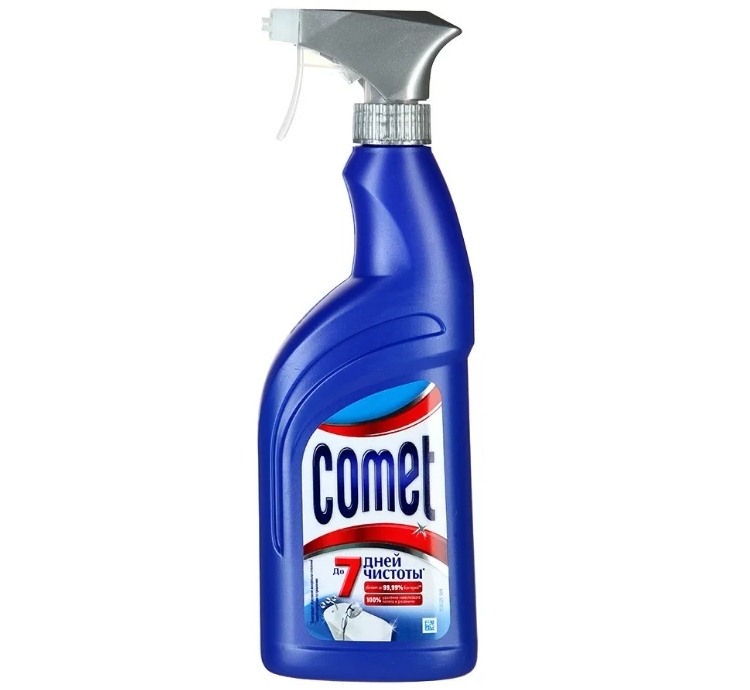
Stork Sanox gel
Stork Sanox gel is a product with an improved formula that will very quickly deal with rust and limescale stains without leaving scuffs and scratches.
Sanox gel is ideal for cleaning:
- tiles,
- shells,
- earthenware products.
The average cost is 65 rubles. (750 ml bottle).
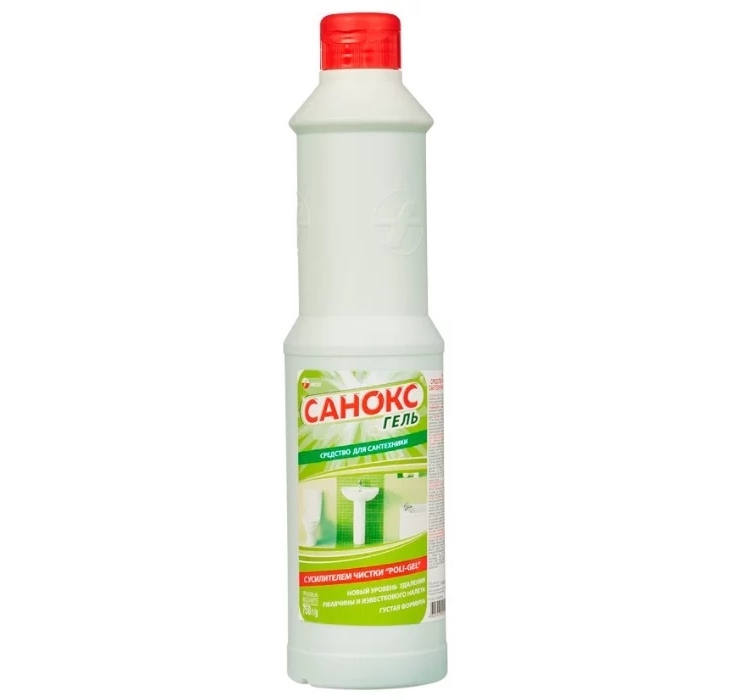
Frosch Green Grapes
Frosch bath and shower spray Green Grapes is an effective, natural, environmentally friendly product. A composition based on grape acid can quickly cope with:
- red spots on the walls of the bathtub,
- lime deposits,
- soapy coating.
The pleasant, barely perceptible aroma of grapes and excellent cleansing properties make Frosch spray very popular among consumers.
The average cost is 300 rubles. (500 ml bottle).

Meine Liebe
Meine Liebe spray for acrylic bathtubs - A cleaning product based on fruit acids will carefully clean the surface of:
- rust stains,
- lime deposits,
- soap scum.
Meine Liebe spray destroys germs and bacteria, forms a protective film on the treated surface, preventing the rapid appearance of dirt.
The average cost is 230 rubles. (500 ml bottle).

Features of cleaning different types of surfaces
The main rule for choosing a bath detergent is that the composition should not only clean off traces of rust and plaque well, but also preserve the original appearance of the plumbing fixtures.
Acrylic
Yes, for acrylic bathtubs It is strictly prohibited to use:
- solvents,
- gasoline,
- alcohol,
- acetone,
- chlorine-containing products,
- dry abrasive powders.
As an option for cleaning an acrylic bathtub you can use the following method:
- Fill the bath with warm water and add 1.5 liters of acetic acid.
- After twelve hours, the water is drained.
- The surface of the bath is wiped with a soapy sponge and then washed off with clean running water.
To maintain the original whiteness of the acrylic bathtub, cleaning is carried out no more than once every two weeks.
Cast iron, enameled
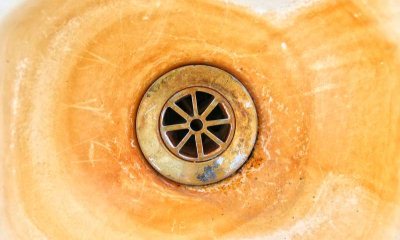 Cast iron or enamel bathtubs are more resistant to various detergent compositions:
Cast iron or enamel bathtubs are more resistant to various detergent compositions:
- vinegar,
- bleaches,
- hydrogen peroxide,
- ammonia,
- soda
An excellent option is a mixture of soda ash and laundry soap. The ingredients are mixed in equal proportions, after which a little water is added (you should get a thick paste). Treat the contaminated surface with the resulting product and leave for one hour. Afterwards the bath is rinsed with water.
Prevention of occurrence
You can prevent the appearance of red streaks and limescale on the walls of the bathtub by subject to following certain rules of prevention:
- It is necessary to rinse the walls of the bath after each use.
- A timely repaired faucet or shower guarantees the absence of rusty stains on the walls of the bathroom.
- Filters installed on the water supply system of the house will make the water cleaner and keep the surface of the bathtub from limescale and rusty deposits.
What not to do and why?
In pursuit of perfect cleanliness, many ignore the prohibitions that can cause final damage to the surface of the plumbing:
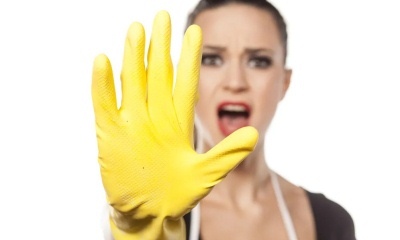 Acrylic bathtubs can only be wiped with soft sponges, cloth or rags. Hard brushes and scrapers can not only scratch, but tear off the coating. For the same reason, you should avoid using dry cleaning powders.
Acrylic bathtubs can only be wiped with soft sponges, cloth or rags. Hard brushes and scrapers can not only scratch, but tear off the coating. For the same reason, you should avoid using dry cleaning powders.- The exposure time of household chemicals on the surface of the bathtub must not be exceeded. The result may be far from the expected effect.
- Do not use toilet bowl cleaners in the bathtub (the aggressive acid composition is harmful to the bathtub surface).
Before applying a new product, it would be a good idea to test it on a small area of the plumbing.
You will find a lot of useful information about rust removal in given section of the site.
Video on the topic of the article
This video will show you how to clean a bathtub from traces of rust and limescale:
Conclusion
A properly selected cleaning composition and strict adherence to the sequence of actions to remove rust stains and plaque will help quickly return the bathtub to its white, radiant appearance.
